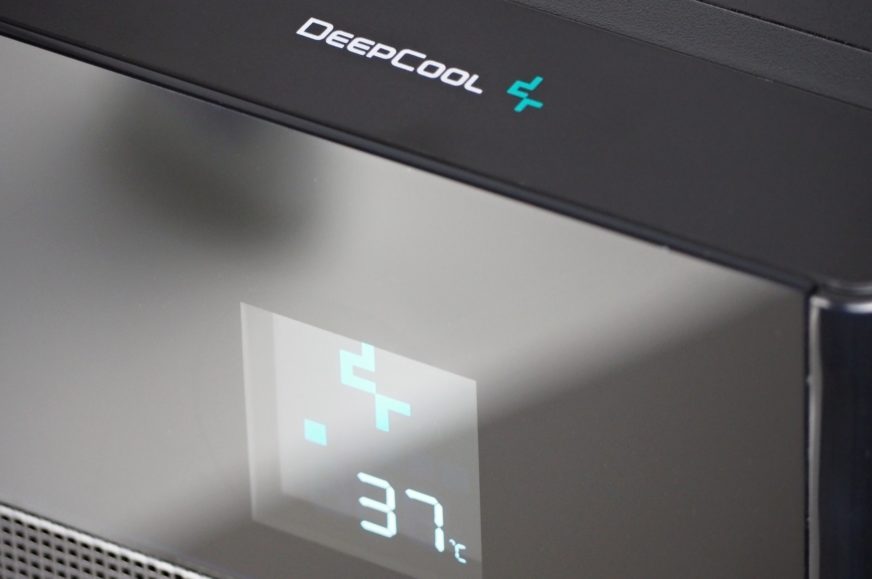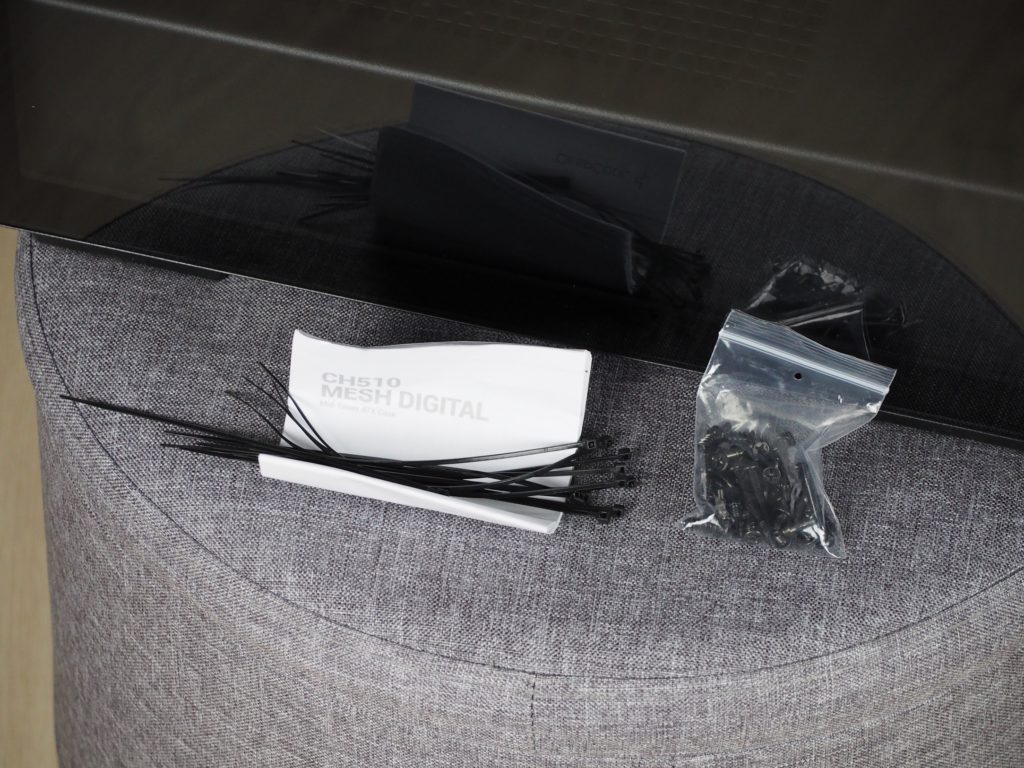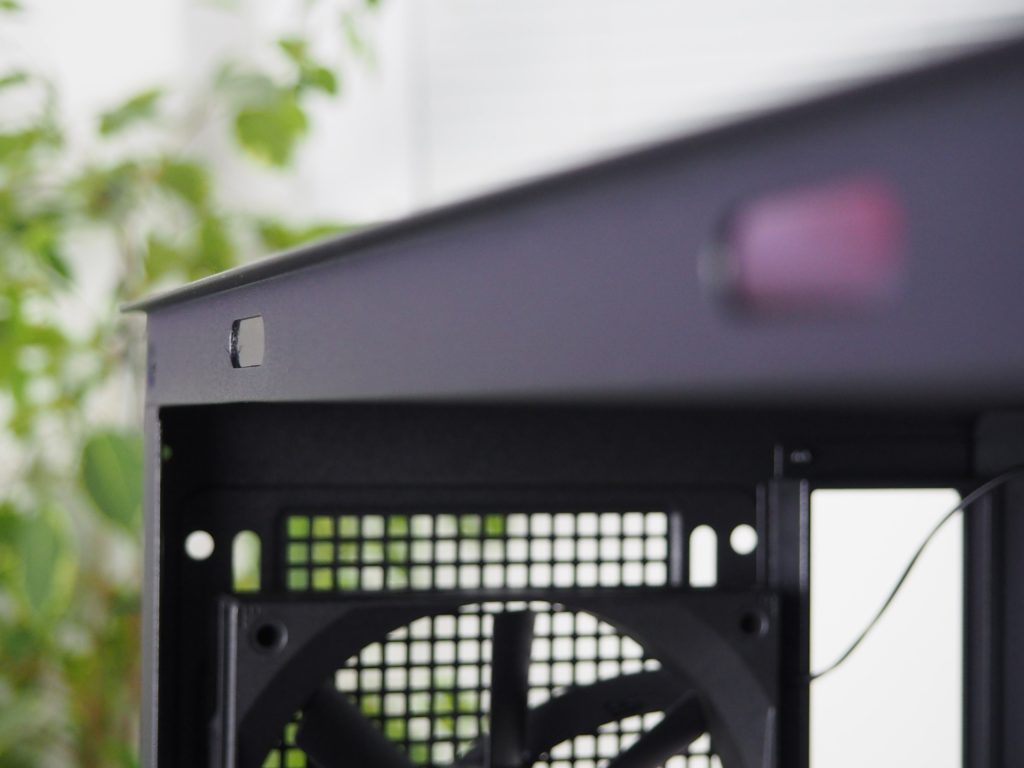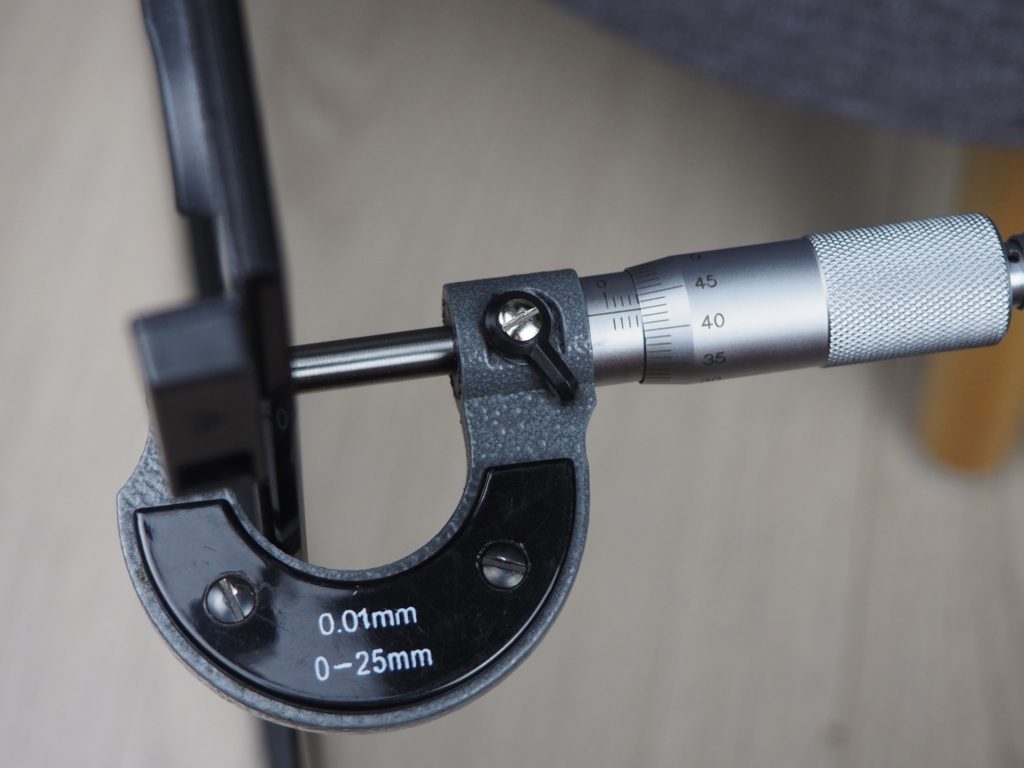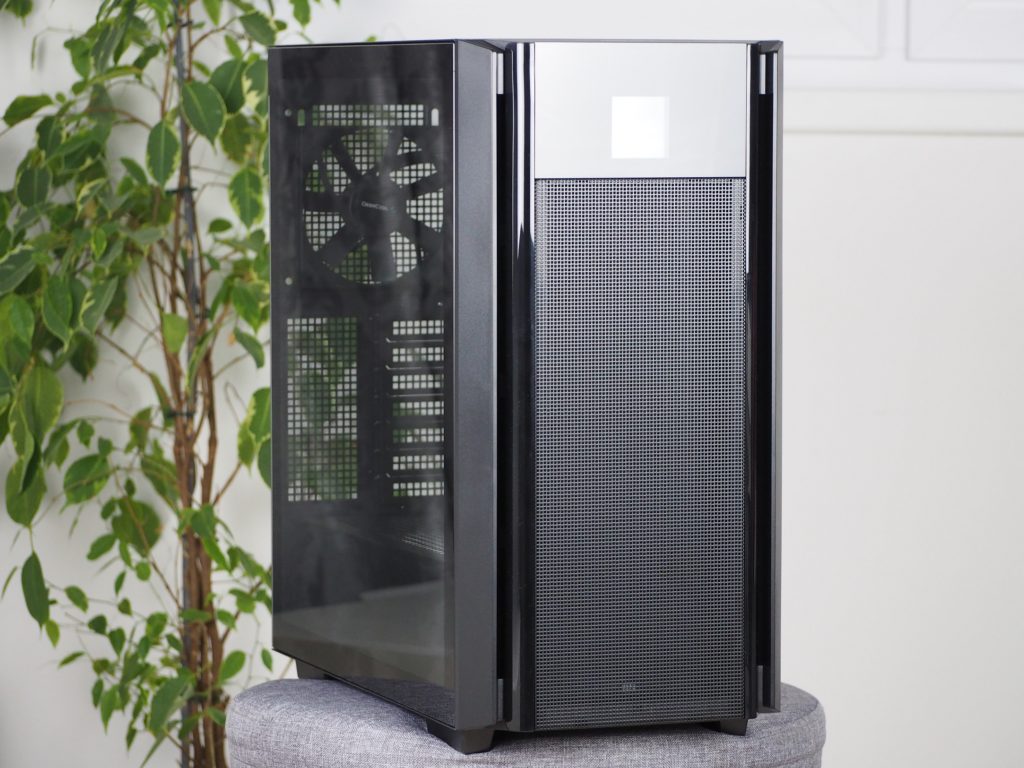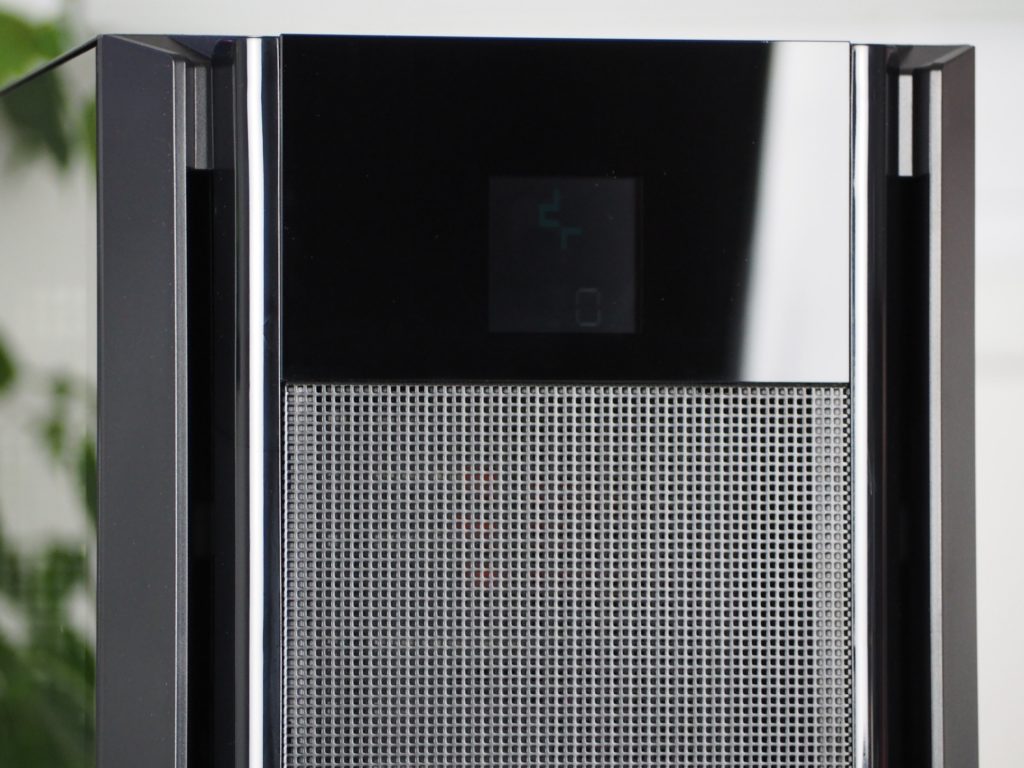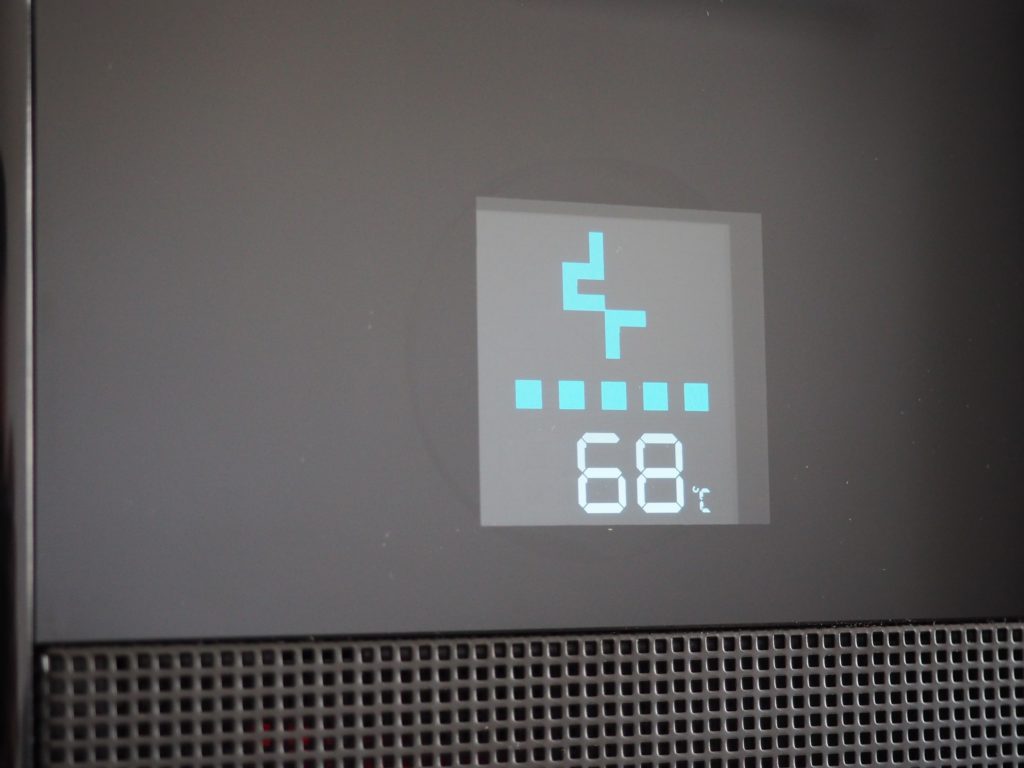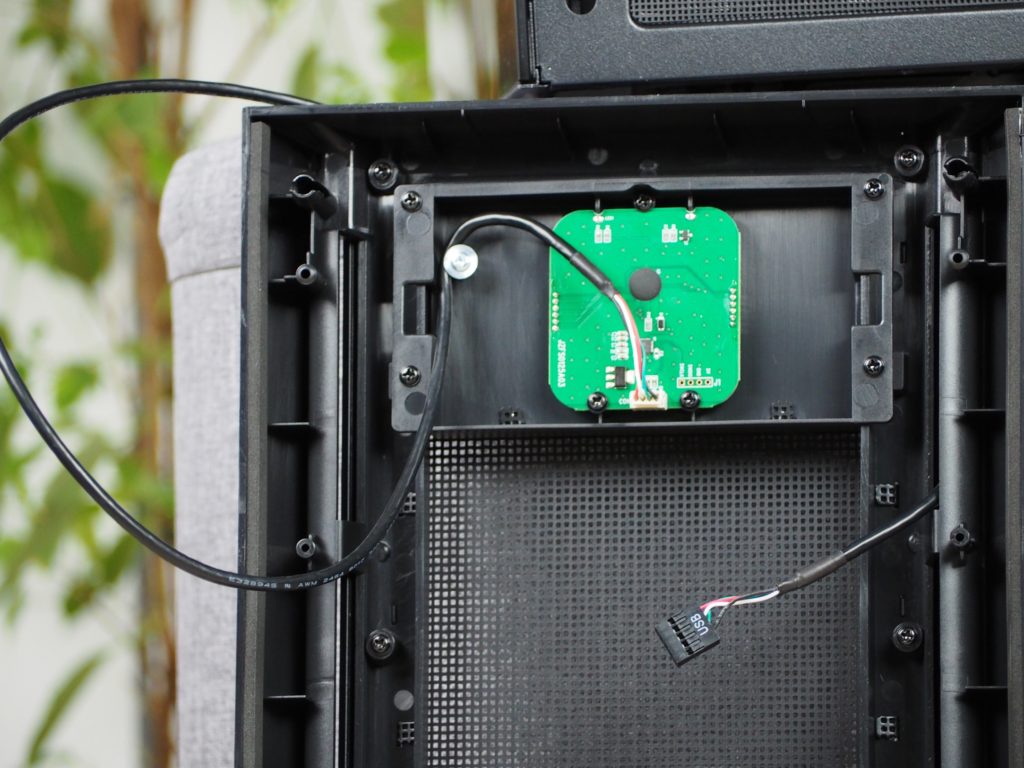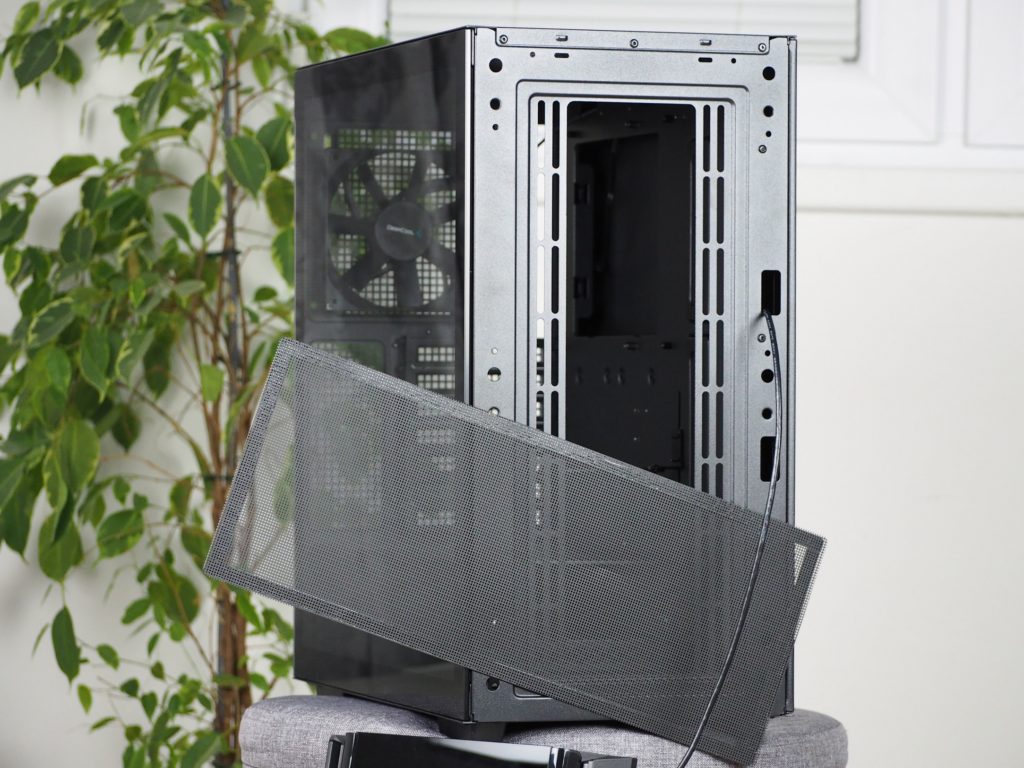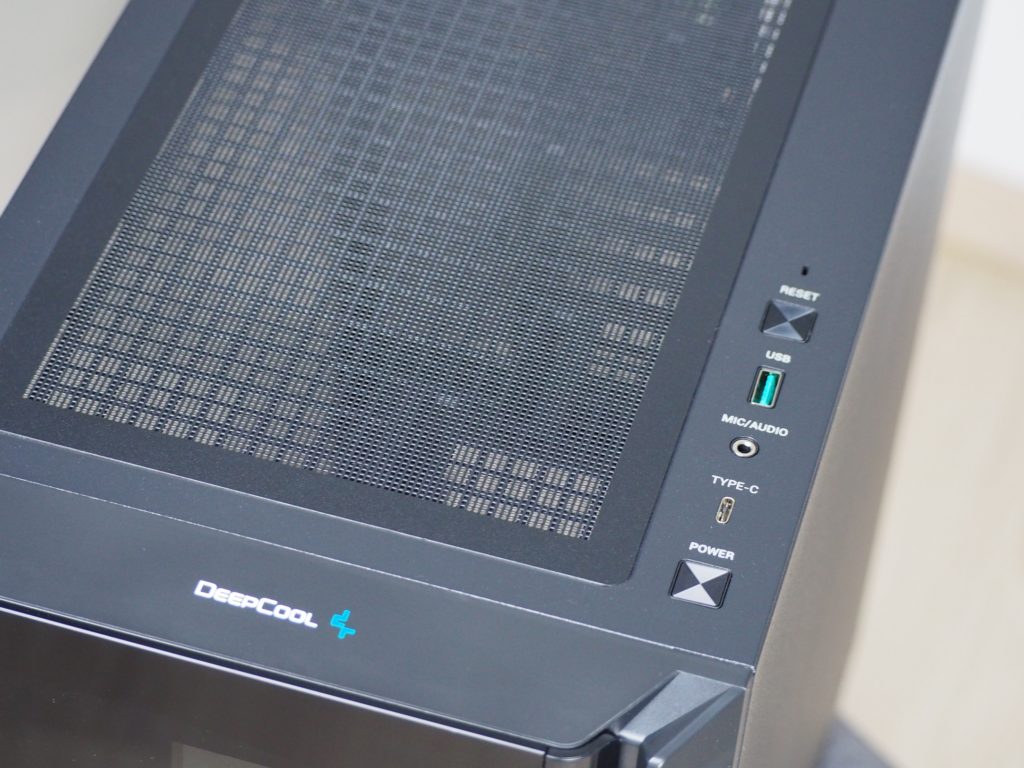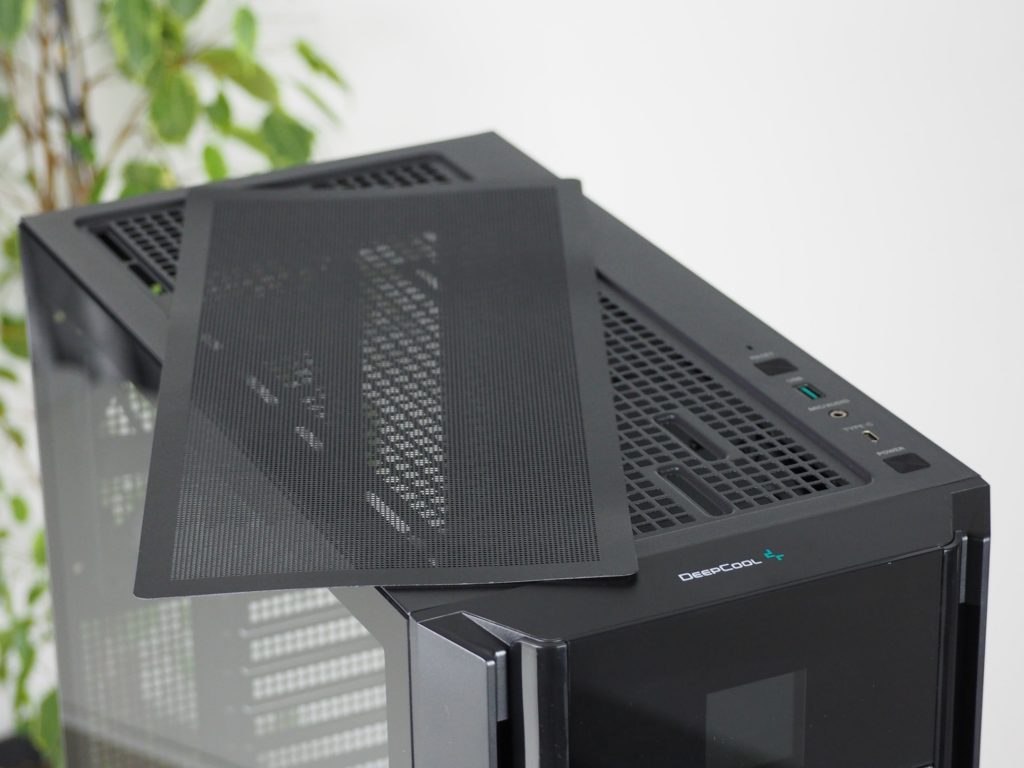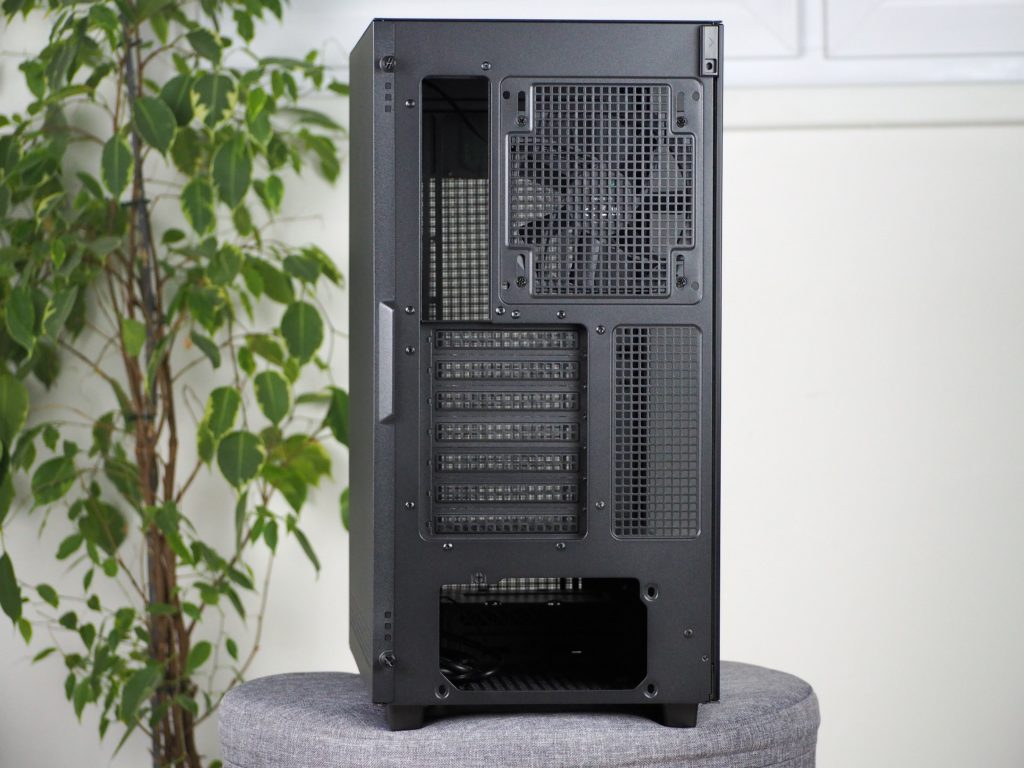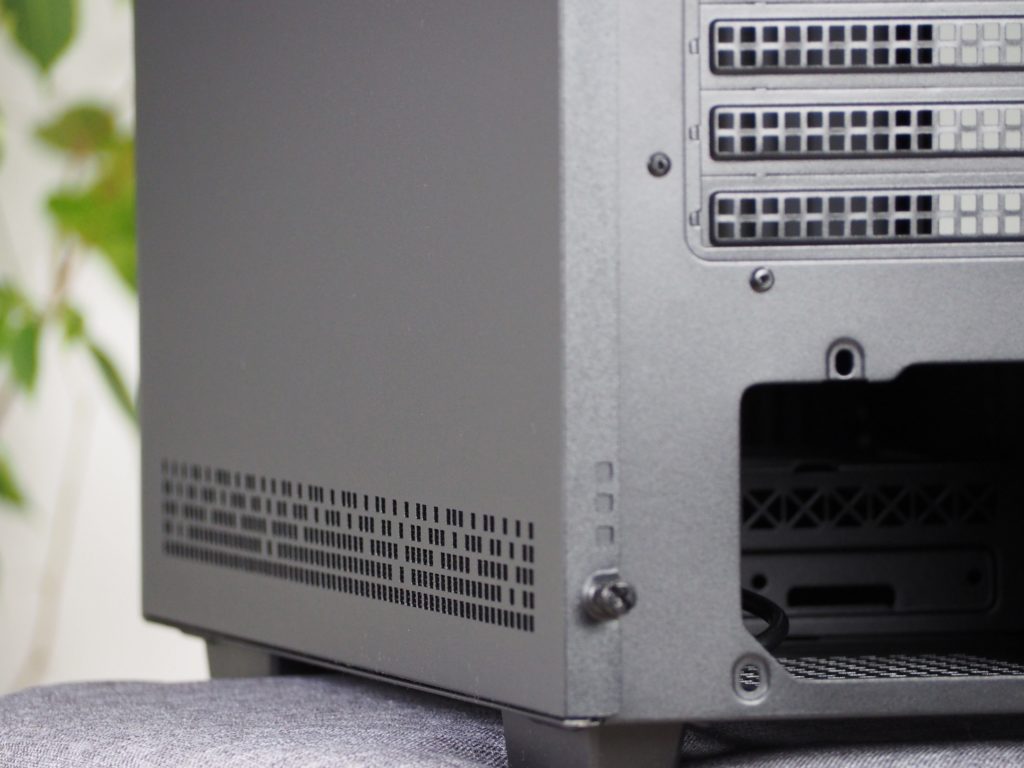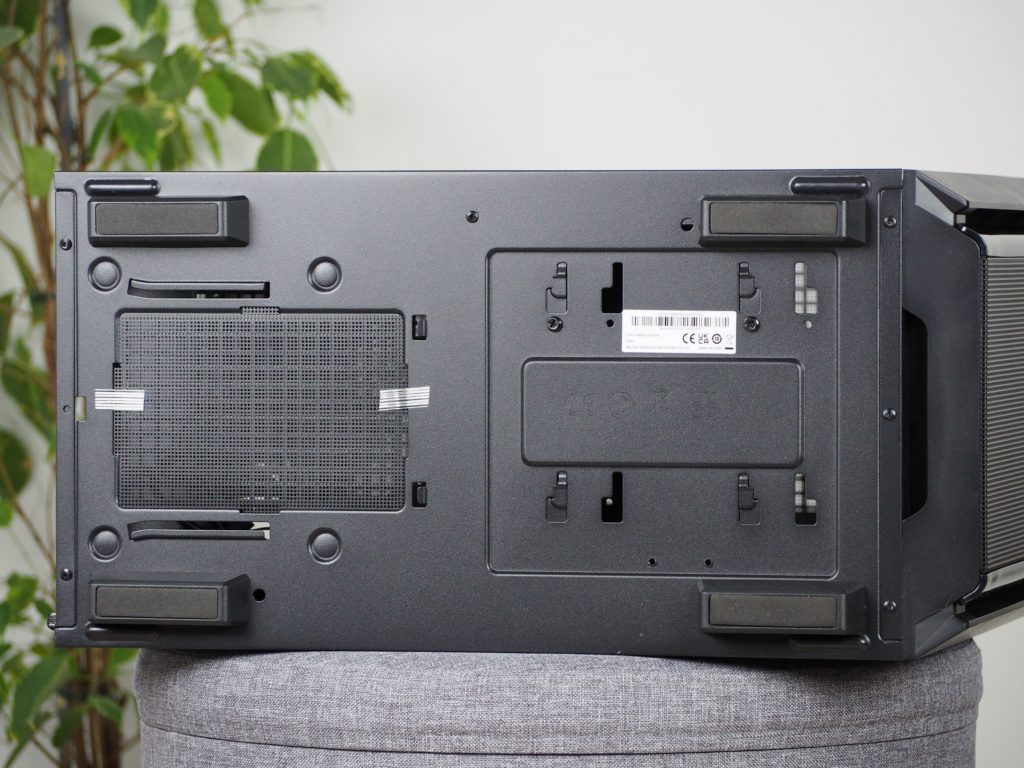Exterior
If you like to monitor the temperatures of your components, we have a tip for you to take your temperature monitoring to the next level. The new CH510 Mesh Digital has a small display on its front to show the current temperature of select hardware. But just monitoring isn’t enough, you also need to take action to lower the temperatures, and in that the case itself falls a little short. Just one pre-installed fan may not be enough.
Basic parameters
| Parameters | DeepCool |
| CH510 Mesh Digital | |
| Supported motherboard formats | Mini-ITX, mATX, ATX, E-ATX |
| Supported PSU format | ATX |
| CPU cooler | up to 175 mm |
| Graphics cards | up to 380 mm |
| Fan | 9× 120 mm (1× preinstalled)/5× 140 mm |
| Supported liquid radiators | 2× up to 360 mm + 1× up to 140mm |
| 2,5" positions | 2 + 1 shared |
| 3,5" positions | 1 + 1 shared |
| 5,25" positions | 0 |
| Dimensions [H/D/W] (and volume) | 470 × 455 × 230 mm (49 l) |
| Weight | 7,5 kg |
| Materials | steel + plastic + tempered glass |
| Connectivity | 1× USB 3.2 gen. 1 type A + 1× USB 3.2 gen 1 type C + 1× 3,5mm jack |
| Approximate price | 95 EUR |
Exterior
The box is packed in a cardboard box, which is stuffed with polystyrene. This protects it from damage during transport. The accessories for the case are the essentials you need for mounting hardware. It includes screws, a large number of single-use zip ties and a clear illustrated manual.
Out of the box, at first glance it looks no different from most cases. The glossy parts on the front and the glass side panels are covered with a protective film. While peeling it off, you’ll notice that the front panel face is glass and hides the display in its center. In addition, the case has other minor improvements that you’ll appreciate during use or even during the actual building process.
Tool-less side panel removal is becoming more and more popular, and it is no different with the case under review. The left tempered glass panel is held to the chassis by two strong magnets on top. The bottom is secured by a rail into which you just drop the side panel.
Since the grip for pulling is made at the back, it is necessary to exert a lot of force to pull the side panel from both magnets. I was always almost afraid to pull hard, lest it accidentally slip out of my hands. When transporting, you can secure the side panel with one screw that goes through the handle and into the chassis.
The front panel is largely made up of holes. While there is a perforation in the middle with 1.5 mm holes, to sort of trap larger dirt, there are narrow holes on the sides with no obstacles. The main attraction of the case is, of course, its display. This is used for displaying the CPU or GPU temperature. For its proper functioning it is necessary to download an app from the manufacturer’s site, otherwise it will have reduced brightness and the value on it will be constantly zero.
Once it’s installed and running, you’ll see one little DeepCool icon in your taskbar, through which you’ll be able to select in which units the temperature will be displayed, and which temperature will be displayed. Either the processor or the graphics card. Of course you can also change the language and set the application to start right after Windows starts. Too bad the designers didn’t use the full potential and it is not possible to set to display the temperature of both components at the same time. Instead, you have a company logo and five cubes that display or not depending on the temperature.
The entire front panel can be removed from the chassis, but care must be taken because of the cable from the display. Its connector is USB type 2.0 and plugs directly into the board, where it is powered and also draws hardware temperature data. Behind the panel there is one more mesh to catch additional particles. Unfortunately it is with the same holes as the front, 1.5mm. It is held to the chasis by magnets. Unfortunately there are no fans mounted in the front, so you have the option of fitting three pieces of 120mm fans or two 140mm fans here. It can handle a liquid cooler radiator as well, up to 360mm.
The top of the case offers only average connectivity for the price range. The USB Type-A and Type-C connectors are one apiece, and the 3.5mm jack is a shared, 4-pole jack (for both headphones and microphone). There are also buttons for power on but also for restart. These are also pleasant to press thanks to their larger contact area. As the last part of the I/O panel on the top is the drive activity LED, which blinks brightly and is relatively sharp. The largest part of the top is taken up by the same magnetic filter that is located behind the front panel. Under the ceiling you can fit the same number of fans from inside the case as the front, so three 120 or two 140mm fans. The same goes for the liquid cooler radiator, which you can fit here in a 360mm format.
The back of the case has a standard layout. At the top, there is an opening for the motherboard I/O panel aligned with the fan opening. Both 120 mm and 140 mm fan formats can be installed here. Underneath are seven removable covers for PCI Express expansion card slots. There’s also a power supply opening located on the bottom. At the height of the tunnel, there is an irregular perforation on the other side panel. Here, too, the case is protected from larger dust by a filter that is glued from the inside of the side panel.
The case is held upright by four elongated legs with anti-slip pads. Under the position of the power supply you can notice a filter for catching larger particles. It is a pity that at least under the power supply, the manufacturer did not use a fine dust filter but the identical perforation as everywhere with 1.5 mm holes. More to the front are the storage compartment mounting holes also with an alternative location 25 mm further forward. At the very top of the front panel there is a handle to pull it out.
- Contents
- Exterior
- Interior
- Test methodology
- CPU and GPU cooling tests
- Motherboard cooling tests
- SSD cooling tests and under-ceiling temperature
- Conclusion





